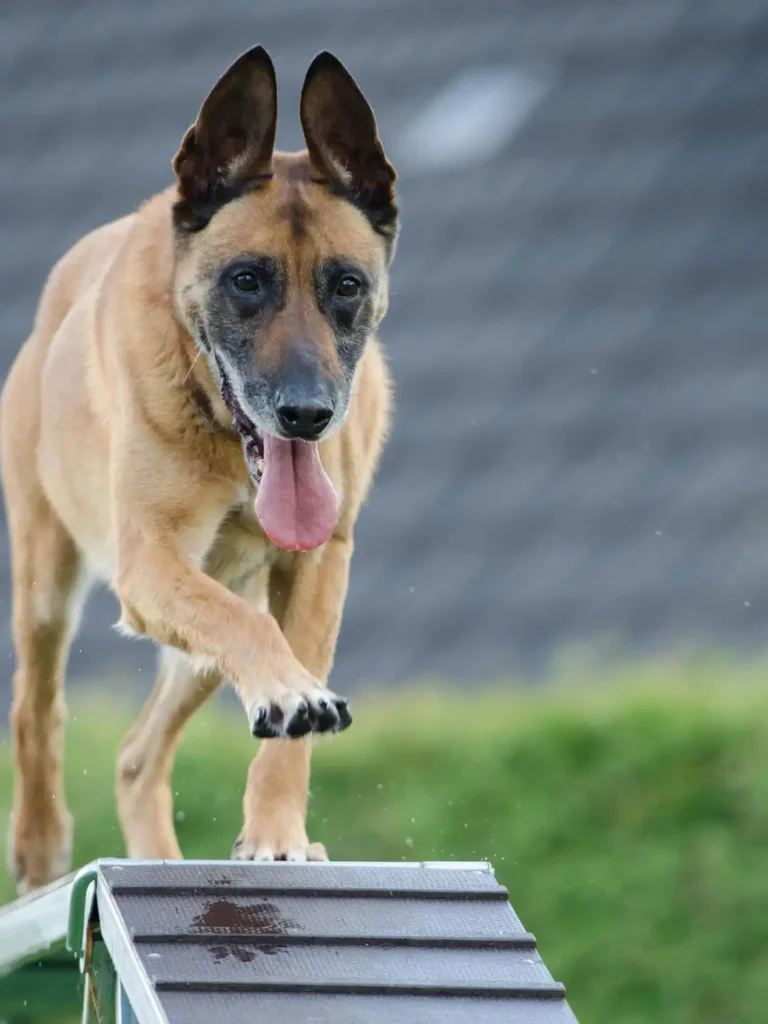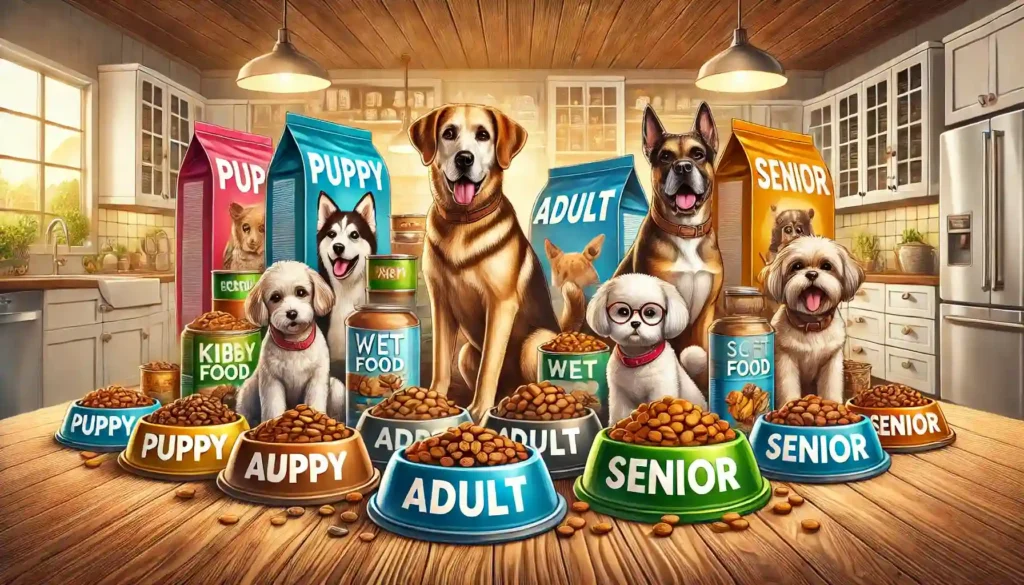Agility training is a fun, engaging, and rewarding way to bond with your dog. It’s a useful tool for improving their physical fitness, mental sharpness, and obedience. This sport involves guiding your dog through a series of obstacles. This beginner’s guide will help you get started on your agility journey.
Why Agility Training?
Beyond being a fun activity, agility training offers numerous benefits that cater to both physical and mental well-being.
Agility training is an excellent full-body workout for dogs. The dynamic movements involved running, jumping, climbing, weaving, and balancing. These exercises engage multiple muscle groups and systems in their bodies.
Running through courses increases heart rate. It promotes better circulation and cardiovascular fitness. Jumping over hurdles strengthens core muscles, legs, and shoulders. Navigating weave poles or adjusting stride lengths improves balance and coordination. High-energy activities burn calories. This helps maintain a healthy weight. It reduces the risk of obesity. Regular movement improves joint mobility and reduces stiffness.
For humans, agility training also provides light exercise. Handlers run alongside their dogs. So it’s a win-win for everyone involved!
Dogs thrive on mental challenges. Agility training taps into their problem-solving abilities. It keeps their minds sharp.
Dogs must pay close attention to their handler’s cues and navigate obstacles accurately. Learning sequences and remembering commands enhances cognitive skills. Deciding when to turn, jump, or pause requires quick thinking and adaptability. Successfully completing challenging tasks boosts self-assurance.
Mental stimulation is just as important as physical activity. A mentally engaged dog is less likely to develop anxiety.
One of the most rewarding aspects of agility training is the opportunity to strengthen the human-canine relationship. As you guide your dog through courses, you’ll establish clear communication, trust, and teamwork.
Dogs learn to rely on their handlers for direction and encouragement. It fosters mutual respect. Clear verbal and non-verbal cues create a deeper understanding between you and your dog. Dedicating focused time to train with your dog nurtures your connection and reinforces your role as their leader and companion.
This shared experience deepens the emotional bond you share with your furry friend.
Many behavioral problems stem from excess energy. Agility training addresses these issues effectively. High-energy breeds and young dogs benefit greatly from expending pent-up energy in a constructive way. Dogs who engage in regular agility sessions are less likely to chew furniture, dig holes, and bark excessively out of frustration.
Physical activity releases endorphins. This helps alleviate stress and anxiety in dogs. A tired dog is truly a happy dog. Agility training ensures they return home content and relaxed.
Agility training is inclusive and adaptable to almost any dog. Adjust obstacles to accommodate different heights and abilities of dogs. For instance, jumps can be lowered for smaller dogs, and tunnels resized accordingly.
Avoid high-impact activities for puppies. Seniors can participate in modified, low-impact versions of agility.
Agility celebrates diversity and proves that any dog, regardless of background, can shine with dedication and practice.
Preparing Your Dog for Agility Training
Preparation is key in agility training of dogs. Follow these steps to set a strong foundation before diving into obstacle courses.
Before starting agility training, evaluate your dog’s current physical condition. Look for signs of pain, lameness, and discomfort during walks. Schedule a vet check-up to rule out underlying conditions such as hip dysplasia, arthritis, and heart problems. Older dogs may require modifications to prevent strain.
Agility relies heavily on precise communication between handler and dog. Without a solid grasp of foundational commands, navigating courses becomes difficult. Focus on mastering these essentials:
Teach patience and control. Ensure reliable recall, especially in distracting environments. Practice walking calmly by your dog side without pulling. Introduce “left,” “right,” “go,” and “wait” to guide your dog through courses.
Obedience lays the groundwork for advanced maneuvers and ensures safety during training.
Agility courses can be overwhelming due to noise. Train your dog to stay focused on you. Start by practicing eye contact at home. Then gradually introduce mild distractions. Reward sustained attention generously to reinforce the behavior.
Begin with simple exercises. Gradually increase intensity and complexity as your dog gains confidence. Always prioritize enjoyment over perfection. If your dog seems stressed, take a step back and revisit easier tasks.
Essential Equipment for Agility Training
You don’t need a professional-grade course to start agility training. Many affordable options exist. Below are common obstacles used in agility and their purposes:
Adjustable bars allow dogs to leap over varying heights. Start low and raise them incrementally as your dog gains proficiency. Jumps enhance leg strength and coordination.
Flexible fabric tubes provide a thrilling challenge for dogs. They’re excellent for building confidence and encouraging forward momentum. Some tunnels have open ends. Others feature curved sections for added difficulty.
Vertical poles arranged in a zigzag pattern teach precision and focus. Dogs must weave quickly yet accurately.
Inclined surfaces simulate climbing and descending motions. These obstacles strengthen hindquarters and improve balance. Use textured materials to prevent slipping.
Platforms where dogs perform brief pauses (e.g., sitting or lying down) test impulse control and patience. This element adds variety to courses and teaches discipline.
Suspended hoops mimic real-life scenarios like jumping through windows. They refine spatial awareness and timing.
If you’re unsure about investing in equipment, consider visiting local dog parks or community centers with existing agility setups. Alternatively, join beginner-friendly classes where instructors provide access to gear.
Training Tips for Beginners
As you embark on your agility journey, it’s essential to adopt strategies that prioritize both effectiveness and enjoyment. Here are some tips to guide you through the process.

Use Positive Reinforcement
Positive reinforcement is the cornerstone of successful dog training. Reward desired behaviors of your dogs. It motivates your dog to repeat them while fostering a positive association with agility work.
Small, high-value treats like chicken bits and cheese can be highly motivating. Keep portions small to avoid overfeeding. Verbal encouragement (“Good job!”) paired with enthusiastic tones helps boost confidence. For toy-driven dogs, tossing their favorite ball or tug toy after completing an obstacle can serve as a powerful reward.
Deliver rewards immediately after your dog completes a task to reinforce the connection between action and reward. As your dog becomes proficient, gradually reduce reliance on treats and shift toward intermittent rewards.
By consistently rewarding effort and success, you’ll cultivate a happy participant who looks forward to each session.
Break Each Step Down
Agility courses involve multiple obstacles. Trying to tackle everything at once can overwhelm your dog. Instead, break the course into manageable pieces.
Start by teaching your dog how to interact with a single piece of equipment. For example, teach them to confidently enter and exit a tunnel before moving on to jumps.
Ensure your dog understands the mechanics of each obstacle before combining them. This includes approaching, navigating, and exiting safely. Once individual components are mastered, create short sequences of two or three obstacles. Gradually increase complexity as your dog gains proficiency.
Acknowledge every milestone, no matter how minor. Completing even one obstacle correctly is worth celebrating!
o maximize engagement and prevent burnout, aim for 5–10 minute sessions initially. Puppies and senior dogs require shorter periods. Mix up exercises within a session to keep things interesting. Alternate between practicing obstacles, playing games, and reinforcing obedience commands.
Conclude each session with a task your dog excels at. This leaves them feeling accomplished and eager to return for the next session. Yawning, panting excessively, and losing focus are signs your dog needs a break. Listen to their cues and adjust accordingly.
Be Patient and Clear in Command
Every dog learns differently. Keep patience for long-term success. Some dogs pick up skills quickly, while others need more time. Avoid comparing your dog’s progress to others’. Even if your dog doesn’t execute a task perfectly, recognize their willingness to try. Progress often happens in small increments.
Frustration can discourage your dog. Maintain a calm demeanor and celebrate incremental improvements. Tailor expectations based on your dog’s age, breed, and experience level. A senior dog might not move as swiftly as a young Border Collie.
Patience fosters trust and creates a supportive environment where your dog feels safe to learn and grow.
Clear communication is vital during agility courses. Teach your dog directional cues. It allows you to guide your dog seamlessly. Start with “left,” “right,” “go,” and “wait.” Use hand signals alongside verbal cues for clarity.
Always use the same words and gestures for specific actions. Repetition reinforces understanding. Incorporate these commands into everyday activities. Begin in low-distraction environments and gradually introduce challenges.
Strong directional skills enable smooth navigation and enhance teamwork on the course.
Safety should always come first during agility training. Never leave your dog unattended near obstacles. Spend a few minutes engaging in light activity to prepare muscles and joints for exercise. Modify heights, lengths, and angles to suit your dog’s size and skill level. Avoid pushing them.
If your dog hesitates or shows fear, back off and revisit the obstacle later. Forcing participation can lead to injury. Watch for signs of discomfort, limping, or fatigue. Consult your vet if you notice any concerning symptoms.
Common Challenges and Solutions
Even with careful planning, challenges are inevitable. Here’s how to address common issues:
Some dogs may feel intimidated by unfamiliar equipment, particularly tunnels and elevated surfaces. Use treats to entice your dog toward the obstacle. Reward calm behavior near the equipment. Gradually expose your dog to the obstacle in a non-threatening way. For example, collapse a tunnel partially so it feels less daunting.
Demonstrate what to do by yourself. Allow your dog to explore at their own pace without pressure.
Reduce training duration to maintain attention, if necessary. Train in quiet, controlled environments initially. Practice exercises that encourage your dog to look at you.
High-energy dogs may struggle to follow instructions due to excitement. For them, teach relaxation techniques like “settle” or “place” to balance energy levels. Wait for calm behavior before proceeding with an obstacle. Channel excess energy into constructive outlets.
Taking Agility Training to the Next Level
Once your dog masters foundational skills, take step into the next level. Join a local agility club. Community clubs provide access to professional guidance, structured classes, and social opportunities. Training alongside other dogs and handlers enhances motivation and learning.
Enroll in classes. Formal instruction from certified trainers ensures proper technique and safety. Many programs cater to beginners and offer progressive levels to match your dog’s development.
If competition appeals to you, organizations like American Kennel Club (AKC), United States Dog Agility Association (USDAA), and Canine Performance Events (CPE) host events for all skill levels. These experiences challenge your dog while building camaraderie among participants.
Even if you’re not interested in competing, regularly introduce new obstacles to your dog. These difficulty keeps your dog mentally and physically stimulated. Variety prevents boredom and sustains enthusiasm.
Agility training is more than just a sport. It’s a way to deepen your connection with your dog. Grab some treats, set up a tunnel, and embark on this exciting adventure together.




